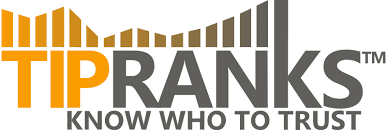Q1 reports show climb in outpatient surgical volume, diverging trends at Surgery Partners, Ardent Health
Editor's Note
In 2025 earnings reports for the first quarter (Q1), both Surgery Partners Inc and Ardent Health Partners Inc posted solid top-line growth and reaffirmed full-year guidance, but they diverged in outpatient performance, TipRanks May 12 reports.
Surgery Partners, a major operator of ambulatory surgery centers (ASCs), reported Q1 revenue of $776 million, up 8.2% year-over-year, despite a net loss of $37.7 million. As detailed in its Q1 report, Adjusted EBITDA rose 6.6% to $103.9 million, driven by a 5.2% increase in same-facility revenue and a 6.5% increase in same-facility cases. Surgical volumes climbed 4.5%, led by a surge in gastrointestinal (GI) and orthopedic cases. Ortho case volume alone rose by 3.4%, with now nearly half of its ASCs offering joint replacements (total joint procedures also climbed by 22%). Despite some rate pressure tied to a higher mix of GI procedures and newly opened de novo centers, Surgery Partners reaffirmed full-year revenue guidance between $3.3 billion and $3.45 billion. The company is also targeting $200 million in M&A activity for the remainder of 2025 and maintains 10 in-progress ASC developments.
Meanwhile, Ardent Health posted Q1 revenue of $1.5 billion, up 4% from the prior year and driven by a 2.7% increase in admissions, with Adjusted EBITDA growing 2.5% to $98 million. However, outpatient surgical procedures declined by 2.3% year-over-year, and payer claim denials rose, creating reimbursement friction. Additionally, the transfer of oncology and infusion services trimmed revenue growth by 70 basis points. Operational gains were still notable, with a 60 basis point drop in supply costs as a percentage of revenue. The integration of 18 NextCare clinics is expected to further bolster downstream volumes, particularly in Tulsa and Albuquerque. Ardent Health’s credit rating was upgraded by S&P to B+ from B, and it ended the quarter with $495 million in cash and a net leverage ratio of 3x.
Together, these developments highlight a sustained industry shift toward lower-acuity settings and a competitive race to build and control same-market ASC infrastructure.
Read More >>

 Free Daily News
Free Daily News